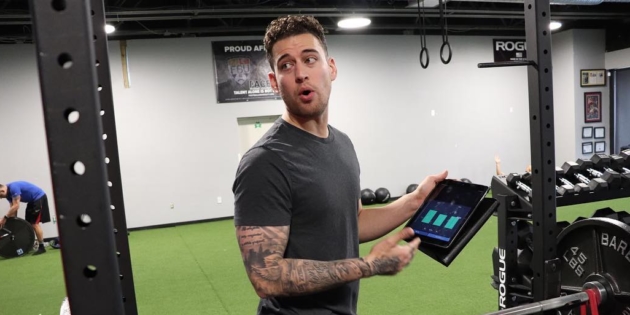Podcast #14: Jeremiah Flood
Notes: “Everyone has their own path of growth.” Kids with low physical literacy: “Just make fitness fun.” “If you’re gonna want to be great… it’s gonna start out of love.” “As competition rises… what will separate them is their decision-making.” Fatigue is psycho-biological. “It may not be cardiovascular… but the way the brain focuses and…
Podcast #13: Paul DeGregorio (Reclaim Your Frame)

Notes: Hunter-gatherers: “They’re constantly moving and to me, that says aerobic system. Hunter-gatherers would have been aerobic monsters.” Taking care of Fundamental Joint Motion “by moving in a variety of ways (climbing trees, stalking, walking long distances, crouching, performing tasks in a deep squat).” “We actually evolved and pulled ourselves out of the food chain…
Podcast #12: Jarod Burton (Train Efficiently)

Hierarchy of Survival: “The most important thing about training is being able to breathe in any position that the athlete needs to get into.” “If breathing is the #1 thing on this hierarchical status, if I don’t first fix that source, then trying to fix everything else with muscular imbalance and vestibular system is going…
Podcast #11: Daniel Back (Jump Science)

Vertical Jump Space Problems: “The concept of a plyometric-based program is risky.” “You’re not addressing structure very well at all.” “Training way too much.” Isolation ideas: “Just get your squat up mindset.” Jump Science’s Principles Specificity: “Whatever you’re trying to get good at, you have to have a background of doing it.” General Strength Training.…
Thoughts 11 – Patrick Peterson

Pat is an Athletics Associate at Army West Point 1) Regressive Progressions One of the early concepts you learn as a performance coach is the idea of progression within a program. Periodization and phase potentiation are designed to aid in athletes success by checking boxes before moving onto new modalities. This is a necessary step…
Podcast #10: Kevin Foster (Feet, Hips, Spine, Fascia)

The spectrum: Powerlifting (extreme Muscle Driven) and Javelin, High Jumping (extreme Elastic, Energy Transfer) Rewire: Driving torque from the foot versus rotating from the hips. “Rotating one is gonna rotate the other.” Muscle & Energy Transfer Paradigm: “Strength will make you faster, strength will make you a better athlete. But obviously it’s not that simple.”…
Thoughts 10 – Alex Richard

Alex Richard is an Assistant Strength & Conditioning Coach at The University of Southern Mississippi 1. Play sport as often as possible Accumulating a variety of sprints/jumps/agility/reaction NATURALLY is much better than the rigid speed/plyometric/agility programs with the meathead strength coach who probably can’t jump very high or run fast but can lift a lot…
Podcast #9: Brett Adams (Transcending Performance)
Notes: On young athletes: “If they don’t have character, they’re not going to learn it by yelling at them and cursing at them… They don’t get it. They don’t care.” “Development is a fluctuating process.” “We get in our way more times than anyone else.” “A lot of kids want competition but they don’t know…
Podcast #8: Grant Fowler (Fowler Fitness)
Fowler Fitness Principles: “That’s the biggest thing that I preach all the time… if you have the principles down, everything pretty much comes easy after that.” Holistic: “Accounting for everything in training that needs to be accounted for to be successful.” “There is a time and place for anecdotes and personal experience… but ultimately, you…
Thoughts 9 – Justin Ochoa

If Mike Boyle tells you why he hates an exercise & why it’s a bad exercise in a 60-second Instagram clip, you know you’re still allowed to use that exercise – right? When people refer to stretches or mobility drills, they say it “opens up the t-spine” or “opens up the hips.” What does that…


